Varieties: Ficus Hilii, Ficus Flash, Ficus Figaro
Species: Part of Fig tree variety
Evergreen or deciduous: Ficus are evergreen trees
Looking for a guide on how to take care of your ficus tree? You've come to the right place! In this blog post, we will discuss everything you need to know about ficus hedging trees. We'll provide information on the different varieties of ficus, care tips, propagation instructions, and more. So whether you're a beginner or an experienced gardener, you'll find all the information you need here!
Varieties of Ficus
Ficus trees are an evergreen tree and apart of the fig trees variety. They are popular hedging plants because they are fast-growing and easy to care for. There are many different varieties of ficus, so you can choose the one that best suits your needs. All ficus has green glossy shiny leaves, and large, violin-shaped leaves. The most common types of ficus trees include:
Ficus hilli:
Ficus Hillii is one of the most common hedging trees amongst the ficus variety. They grow quickly and have. large glossy leaves. These trees are also very hardy and require little maintenance. Ficus hilli is able to withstand both heat and cold temperatures. They grow to be up to 30 meters tall but can be pruned to maintain the desired height. Because of their size, these trees make great landscape accents.
Ficus Flash:
The Ficus Flash is another popular type of ficus tree. They are smaller than the Ficus Hilii Flash and grow to around 10 meters in height. Their leaves are dark green. These trees are very hardy and can tolerate extreme weather conditions.
Ficus Figaro:
The Ficus Figaro is another popular choice among gardeners. It has a compact growth habit with small dark leaves and glossy green foliage. This type of ficus grows to be only 2 meters tall. Like other ficus varieties, it requires minimal upkeep and thrives in dry conditions. Ficus Figaro is also salt-tolerant, making it a good choice for coastal areas.
As you can see, there are many different types of ficus hedging trees to choose from! So whether you're looking for a large tree or a small shrub, you're sure to find the perfect plant for your garden.
Care Tips
Now that you know a little bit about the different types of ficus hedging trees, let's talk about care tips. Ficus trees are generally low-maintenance plants, but there are a few things you should keep in mind to ensure they stay healthy and thrive. Here are some care tips to keep in mind:
- Ficus trees need full sun to partial shade. They will not do
- These plants prefer well-draining soil. If your soil is heavy or clay-like, consider adding sand or organic matter to improve drainage.
- Ficus trees are drought tolerant and can withstand long periods without water. However, they will need to be watered more frequently during hot, dry periods.
- Ficus trees should be fertilized two or three times per year with a balanced fertilizer.
- These plants can be pruned at any time of year to maintain the desired shape and size.
Propagation Instructions
Ficus trees are easy to propagate from cuttings or air layering. To take a cutting, simply remove a stem from the parent plant and pot it in well-draining soil. Water regularly until roots have formed and the plant is established. Air layering is a bit more complicated but can also be done at home. For this method, you will need to remove a section of bark from the stem of the parent plant and pot it in moist, well-draining soil. Water regularly until roots have formed and the plant is established.
Are Ficus Roots Invasive?
One of the most common questions gardeners have about ficus trees is whether or not their roots are invasive. The answer is yes, ficus roots can be invasive if they are not properly maintained. If you live in an area with sandy soil, consider planting your ficus tree in a container to prevent its roots from spreading. Otherwise, make sure to prune the roots or branches regularly to keep them from getting out of control.
How often do I need to prune my ficus?
Ficus trees can be pruned at any time of year to maintain the desired shape and size. However, they generally only need to be pruned once or twice a year. In general, you want to prune your ficus every spring before new growth begins. You may also want to prune your tree in late fall or early winter when it's dormant. Pruning helps promote strong branch development and prevents the formation of suckers.
What is the best way to prune my ficuses?
There are several ways to prune your ficuses. Some people like to use hand shears while others prefer pruners. Whichever tool you decide on, remember to always wear gloves when trimming your ficus tree. Also, be careful not to over prune your ficus as this could damage your tree. Always consult with us or a landscaper before making any major changes.
Watering Your Ficus Trees
As we mentioned earlier, ficus trees are drought tolerant and can withstand long periods without water. However, they will need to be watered more frequently during hot, dry periods. When watering your ficus tree, make sure to soak the roots well and then allow the soil to dry out completely before watering again. Overwatering can lead to root rot, so it's important not to overwater these plants.
Ficus for hedging and privacy
If you want to create a beautiful hedge or privacy screen, then ficus trees are a great option. Not only do these plants provide a nice backdrop for your landscape, but they also offer privacy and protection against wind and rain. You can use them as a single specimen or combine several together to form a larger hedge. Ficus varieties should be planted 1 - 1.5 meters apart. As mentioned earlier, ficus trees grow quickly and can reach heights of up to 30 meters. This makes them ideal for creating a dense hedge or screening around your property.
How Long Does It Take to Grow a Ficus Tree?
The growth rate of ficus trees varies depending on the variety. Some species can reach heights of over 30 meters in just one season while others may require multiple seasons to reach maturity. Generally speaking, ficus trees grow faster than other deciduous trees such as maple and oak. As a result, they are often used as a fast-growing alternative to evergreens like cedar.
The life span of a ficus tree depends on many factors including climate, soil type, and growing conditions. In general, ficus trees can live for 100 years or more. While they typically don't produce flowers, some varieties can bloom once every few decades.
As you can see, there's a lot to know about caring for a ficus tree! But with proper care, these trees can be a beautiful and low-maintenance addition to your landscape. So if you're looking for a versatile plant that is easy to care for, consider planting a ficus tree in your garden.
View our ficus variety here
Other hedging trees options here


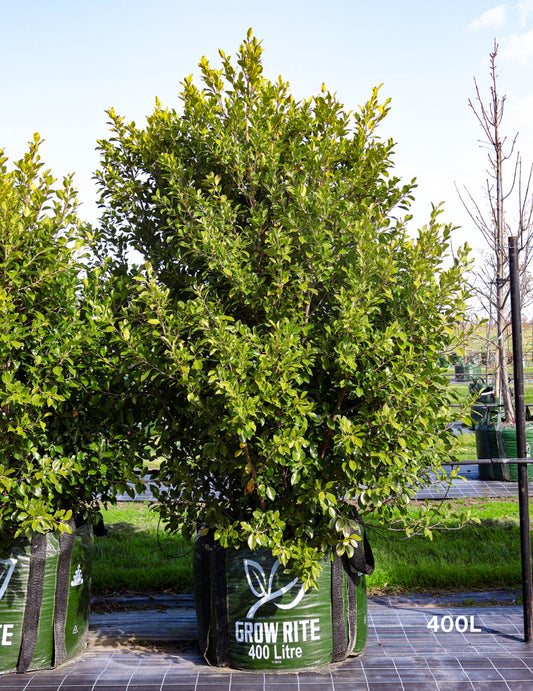
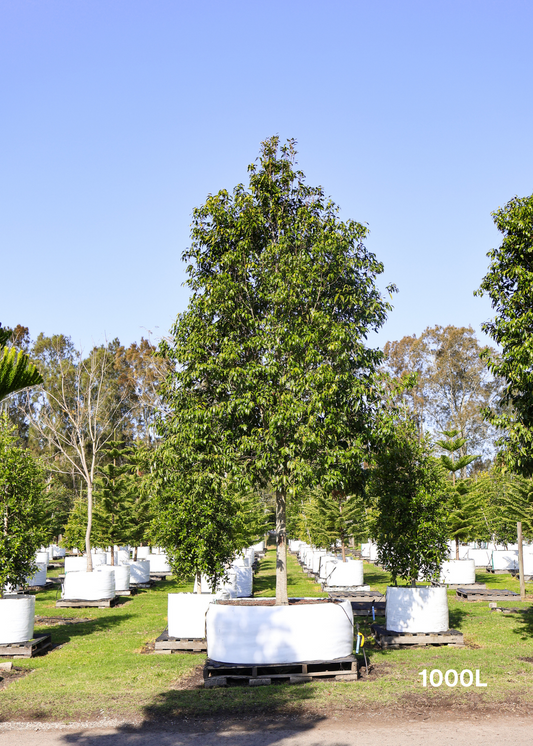
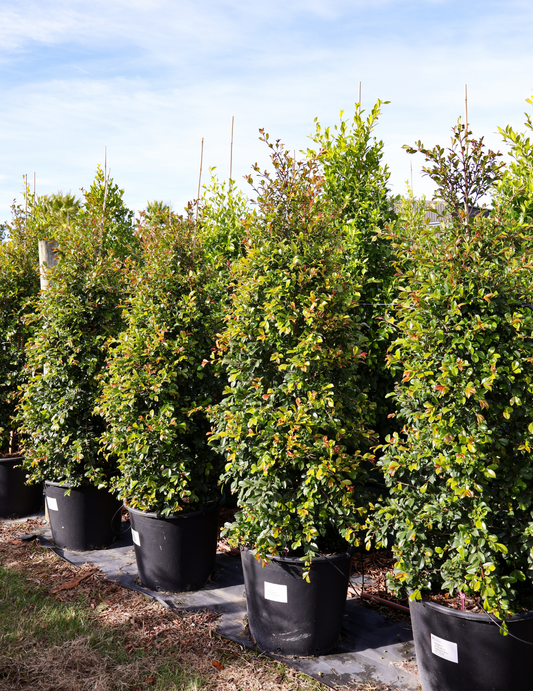
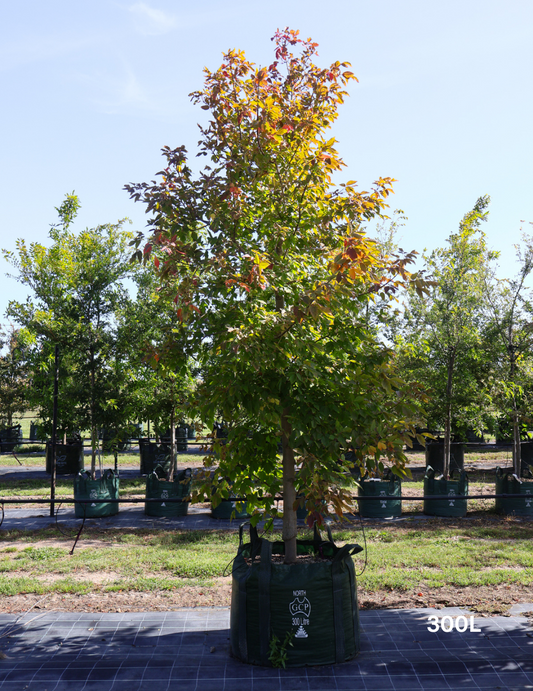
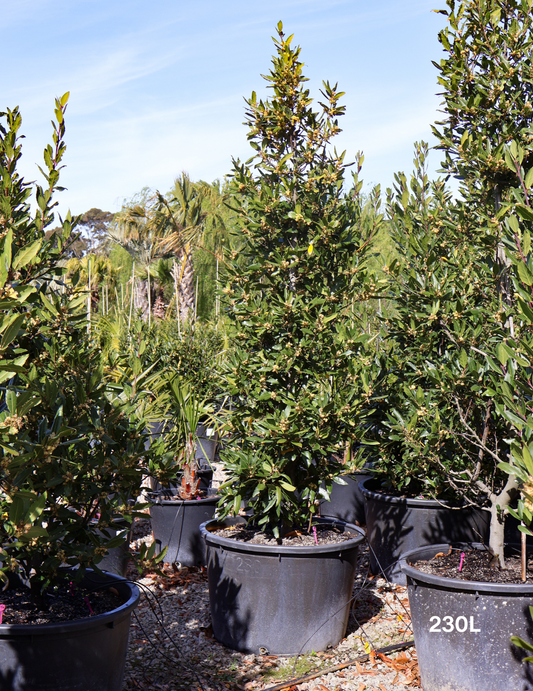
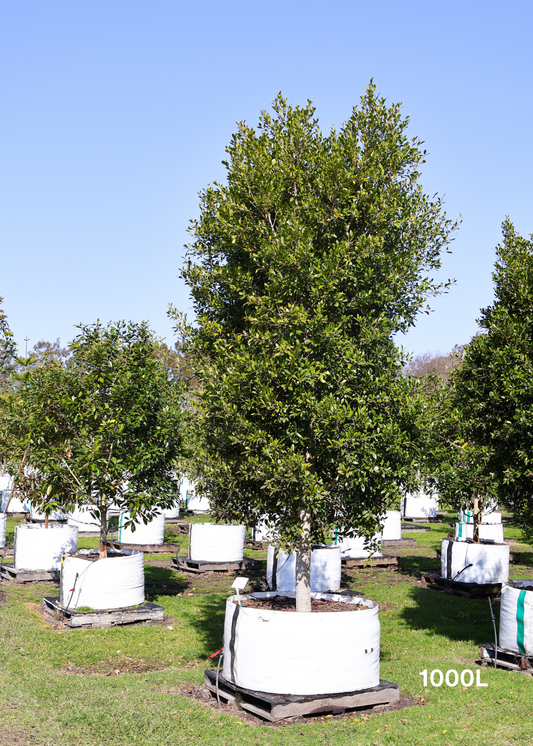






3 comments
I have an ornamental ficus tree which has been with us over 40 years. It has been kept trimmed however its large pot has broken and its leaning at 45degrees with roots establishing into the ground , I suspect. There is a large lesser brick wall beside the pot. I called Brisbane City Council and asked if I could donate it to them as it will need machinery to move it. They only use nurseries with native plants so can’t accept it.
If it can be propped up and kept trimmed would the roots damage the wall?
Would you have any suggestions as to a landscape gardener or developer who may be able to remove it and use it please.
We are in a Northern Brisbane suburb of Everton Park and there is very easy access to the potted tree.
I would appreciate any ideas or assistance you may be able to give me. Thank you very much.
I absolutely love ficus trees and their versatility in creating beautiful hedges and privacy screens. Your comprehensive guide on caring for ficus trees is a fantastic resource for anyone looking to add these stunning plants to their garden. I’ve personally seen the benefits of professional tree care services like Grapevine Tree Removal in maintaining the health and appearance of ficus trees, especially when it comes to tree trimming for pest control and structural integrity. It’s great to see such detailed information on different ficus varieties, care tips, and propagation methods. I’ll definitely be referring back to this post as a valuable resource for my own gardening endeavours. Thank you for sharing your knowledge with us!
Wow…Such a great blog !!!! I was looking for the same information from many days; I accidentally hit your blog and found it really useful. Thanks For Sharing.